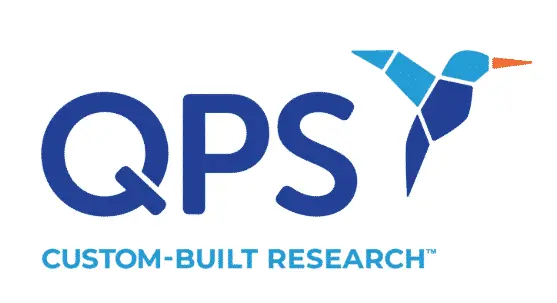About Messenger Ribonucleic Acid (mRNA)
Current mRNA (messenger ribonucleic acid) research has rapidly driven the discovery and production of this new therapeutic. Modified mRNAs are single-stranded ribonucleic acids that have been transcribed in vitro from a DNA (deoxyribonucleic acid) strand involved in a target protein synthesis, almost any functional protein in the body can theoretically be produced using this technology. Therapeutic mRNAs are designed to mimic the natural coding process for production of specific proteins used in a wide variety physiological repair and replacement processes.1 This therapeutic can produce targeted proteins that are useful to combat numerous diseases, including some previously thought to be incurable. Since mRNA therapeutics do not need to enter the nucleus to be functional, unlike DNA-based drugs, they typically have very high efficiency and low toxicity.2 The advantages of mRNA therapies over DNA or protein/ peptide therapies has propelled their development in various biomedical fields, helping millions of patients suffering from a wide variety of diseases.2, 3, 4
Certain physiochemical properties of mRNA, including the structural instability, limit the effectiveness of mRNA as a therapeutic. It is a negatively charged macromolecule, making it difficult to pass through the anionic cell membrane and function within the cytoplasm. Messenger RNAs and oligonucleotides in general, are also subject to metabolic cleavage by naturally occurring nucleases, so when used as a drug they are chemically altered for better resistance to enzymatic cleavage. Additionally, mRNAs can induce an immune response with associated toxicity, which can restrict their use in certain circumstanses.3 Extremely important is the development of new delivery strategies for mRNA-based drugs to help overcome cellular barriers, increase enzymatic stability and improve immunogenicity.
In vitro transcription processes are used to produce therapeutic mRNAs; the precursor mRNA is synthesized when RNA polymerase converts genes into primary mRNA transcripts, the mRNA then can be isolated and purified. The general structure of a synthetic mRNA possesses five main regions (Figure 1). The primary functional section is the open reading frame (ORF) which is where the transcription for protein biosynthesis is accomplished. On both ends of the ORF are the 5′ and 3′ untranslated regions (UTRs). These regions control the translation efficacy and the rate of decay of the mRNA. The 5′ endcap protects the mRNA from ribonucleases, improving mRNA stability and ultimately its efficacy. Finally, there is a polyadenine (polyA) end group added to the 3′ end of the mRNA, of which the chain length is crucial in regulation of mRNA translation efficacy and protein expression.2, 5 The optimization of both mRNA structure and transport system are essential for success of the mRNA therapeutic.2
APPLICATIONS OF mRNA THERAPIES
Messenger RNA therapeutics are becoming a powerful weapon for a variety of infectious diseases, cancers, genetic diseases and cardiovascular diseases. Modified messenger RNA therapeutics can be divided into three different types: vaccines that prevent contagious diseases, notably SARS-CoV-2; second vaccines that are therapeutic, cancer treatments for example; and finally those that are used to code proteins missing or downregulated proteins, these mRNAs are often used to treat solid tumors.5
SARS-CoV-2 mRNA vaccines are now routinely used to combat worldwide pandemics. These vaccines can provide up to 90% effectiveness, however, antibodies against new variants are almost undetectable in the plasma of vaccinated patients, but additional doses seem to improve the physiological symptoms.5, 6
Monoclonal antibody (mAb) producing mRNAs are designed to produce therapeutic mAbs in vivo, improving antibody therapy efficacy by turning targeted cells into factories that translate nucleic acids to produce functional mAbs7. Antibody-based drugs have received much attention, but their application is limited due to their instability properties, high cost and storage issues.2, 7
Messenger RNAs can be designed to produce missing or downregulated naturally occurring proteins that directly treat diseases. These immunotherapies are known for their high efficiency, efficacy and low toxicity. In this approach, an encoded mRNA results in the biosynthesis of a protein that replaces naturally occurring protein needed to control a disease. Applications for this type of mRNA have been used for treatment of cancers, heart/lung/blood diseases, autoimmune diseases and metabolic diseases.2, 8, 9
Gene editing therapeutic technology has progressed dramatically thanks to rapid development of programmable nucleases, especially for some cancers, muscular dystrophy, and blood diseases.2 Here, the mRNA is designed with gene editing capability, which can deliver a code to the DNA to produce a nuclease, which inserts or deletes mutations found in the DNA chain in the gene with high specificity and low risk of mutation.10
Therapeutic mRNA has become one of the hottest areas for drug development. Now, synthesis of mRNA is markedly faster and easier through improved in vitro transcription processes that are quickly scaled up to manufacture.2 Messenger RNA development likely will accelerate even faster, allowing this new class of drugs to continue to have a much larger role in a wider variety of disease treatments in the not so distant future.
BARRIERS ENCOUNTERED WITH mRNA DELIVERY
As mentioned above, the general structure and instability of mRNA initially made it a poor candidate for therapeutic medicine. Delivery of mRNA to site(s) of action remains to be a significant hurdle since it is negatively charged and has difficulty crossing the anionic cell membrane. One approach to overcome this obstacle is to create a delivery cell, which surrounds the mRNA with an ionizable hydrophilic outer surface (Figure 1). These delivery systems must not reduce mRNA potency, but at the same time must provide the mRNA with protection and optimize cellular uptake.11 Messenger RNA delivery strategies usually involve optimizing electrostatic interactions, hydrogen bonding, or coordination interactions.11 Many approaches to improve mRNA delivery have been attempted; the most successful ones include lipid nanoparticles (LNP), polymeric nanoparticles (PNP), inorganic nanoparticles and nanoemulsions.11 In some cases, the mRNA’s structure is modified with end groups with surfactant properties, such as a cholesterol or polyethylene glycol to enhance its incorporation into the micelle.2 Ultimately, suitable delivery systems must facilitate cellular transport across the cell membrane into the cytoplasm, afford some protection against endosome attack, but most importantly, they must have low toxicity and improve immunogenicity.2
BIOANALYSIS OF mRNA THERAPEUTICS IN DRUG DEVELOPMENT
Some examples of bioanalyses of mRNA routinely performed at QPS include RT-qPCR, ELISA, hybridization immunoassay, and hybridization-HPLC-fluorescence.
RT-qPCR/qPCR
The PCR (polymerase chain reaction) assay is a process that makes billions of copies from a very small amount of DNA to ‘amplify’ it enough to make a sufficient amount of the DNA to easily measure and study in more detail. It is arguably the most sensitive molecular assay available for oligonucleotides; theoretically, it has the potential to detect a single DNA molecule.12 Quantitative PCR (qPCR) is achieved by labeling a DNA molecule with a fluorescent probe or a dye. Once labeled, the DNA’s concentration is measured by a fluorescence detector which is proportional to the DNA’s concentration. For quantification of RNAs, reverse transcription quantitative polymerase chain reaction is performed by extracting the mRNA using a validated method and converting the RNA sequence to a complementary DNA sequence (cDNA) with reverse transcriptase (RNA-dependent DNA polymerase). The resulting cDNA is amplified using the same polymerase chain reaction, then this solution is mixed with a fluorescent probe and the target cDNA is measured. RT-qPCR and qPCR are routinely used for extremely low-level quantitation of biotherapeutics and viral vectors.12 This requires that an RNA internal standard be added to correct for target RNA recovery. Both the internal standard and the target mRNA are amplified with the RT-qPCR primers labeled with the fluorescent probe and quantitation is performed in the linear region of the calibration curve for optimum reproducibility and accuracy. RT-qPCR HPLC-FLD is capable of a sensitivity of around 0.1 ng/ml for some full-length oligonucleotides as well as side products, metabolites and degradants.
Enzyme-Linked Immunosorbent Assay (ELISA) and Related Ligand Binding Assays
ELISA immunoassay and ligand binding assays are extremely useful for oligonucleotide analysis. A good example used extensively in our lab is the Simoa (single molecule array) assay. It is an ultra-sensitive immunoassay technique performed by mixing a solution of sample and paramagnetic particles with bound antibodies designed to target a specific oligonucleotide. After equilibration with an extracted sample, the beads are collected from the solution with a magnet, washed and mixed with a fluorescently labeled enzyme solution. The resulting solution is loaded on to a Simoa disc with several thousand wells. Each available well holds one bead. The disc is loaded onto a fluorescent image reader where the average fluorescence intensity is directly read. The measured fluorescence is proportional to the concentration of the analytes.
RNA Hybridization HPLC-FLD
Hybridization HPLC-FLD also relies on the ability to hybridize a fluorescent probe to the target RNA. The approach is to tag mRNA binding proteins with fluorescent markers then separate all hybridized components with an anion-exchange high performance liquid chromatograph with an in-line FLD. This method allows any component specifically related to the fused protein-RNA hybrid to be quantitated. The primary drawback of HPLC–FLD assays is the necessity to synthesize specific fluorescent probes, which leads to longer development times and higher cost. Even with these drawbacks, this assay offers superior levels of sensitivity and an added degree of selectivity due to the upfront separation.
THE FUTURE OF THERAPEUTIC mRNAS
Messenger RNA vaccines now have been shown to control SARS-CoV-2 type viruses and will have an even more important role to play in the battle against any new pandemic diseases along with any of the variants. Current efforts using mRNA-based drugs are not only directed toward infectious disease vaccines but also cancers, protein replacement therapies, and treatment of genetic diseases.2, 5, 9 Going forward, improvements in delivery systems, improvements in mRNA structural stability under typical physiological conditions and improvements in the regulation of the activation of the immune system all will be necessary. Progress on new mRNA therapies will rapidly accelerate novel drug development, and the bioanalytical methods supporting this development must evolve to keep up with the needs of this new and exciting technology.
QPS IS COMMITTED TO WORKING WITH YOU
QPS has extensive experience with biosimilar development, and we truly understand the scientific complexities, in particular around ligand binding assays to allow for robust PK and antibody assessments and the pivotal bioanalytical test strategies for the determination of the possible development of immunogenicity. We are committed to working with you to assist you in advancing your mRNA portfolio in this rapidly developing market segment for the benefit of patients worldwide
BROAD ACCESS
QPS provides clients with broad strategic access to its nonclinical and clinical development capabilities and experience to conduct nonclinical and clinical development of a diverse portfolio of mRNA across various therapeutic areas. Our preferred vendor agreements also provide for the establishment of a client dedicated unit within our organization.
TIMELY DELIVERY
Partnering with QPS will position you for success, allowing timely delivery of your mRNA therapeutics to the marketplace.
REFERENCES
1. National Human Genome Research Institute, https://www.genome.gov/genetics-glossary/messenger-rna
2. Qin S, Tang X, Chen Y, Chen K, Fan N, Xiao W, Zheng Q, Li G, Teng Y, Wu M, and Song X, “mRNA-based therapeutics: powerful and versatile tools to combat diseases”, Signal Transduct Target Ther. 2022; 7: 166
3. Sergeeva, O. V., V. E. Koteliansky, and T. S. Zatsepin. “mRNA-based therapeutics–Advances and perspectives.”Biochemistry 81.7 (2016): 709-722.
4. Patel A K, Kaczmarek J C, Bose S, Kauffman K J, Mir F, Heartlein M W, DeRosa F, Langer R, and Anderson D G, “Inhaled Nanoformulated mRNA Polyplexes for Protein Production in Lung Epithelium”, Adv Mater. 2019 Feb; 31(8): e1805116
5. Duan L-J, Wang Q, Zhang C, Yang D-X and Zhang X-Y (2022) “Potentialities and Challenges of mRNA Vaccine in Cancer Immunotherapy.” Front. Immunol. 47 (May 2022) 92366.
6. Garcia-Beltran WF, et al. mRNA-based COVID-19 vaccine boosters induce neutralizing immunity against SARS-CoV-2 Omicron variant. Cell. 2022;185:457–466
7. Shepard HM, Phillips GL, D Thanos C, Feldmann M. “Developments in therapy with monoclonal antibodies and related proteins.” Clin. Med. (Lond.). 2017;17:220–232.
8. Chaudhary N, Weissman D, Whitehead KA. “mRNA vaccines for infectious diseases: principles, delivery and clinical translation.” Nat. Rev. Drug Discov. 2021;20:817–838
9. Kwon H, et al. “Emergence of synthetic mRNA: in vitro synthesis of mRNA and its applications in regenerative medicine.” Biomaterials. 2018;156:172–193.
10.Zhang HX, Zhang Y, Yin H. “Genome editing with mRNA encoding ZFN, TALEN, and Cas9.” Mol. Ther. 2019;27:735–746
11. Yanez Arteta M, et al. “Successful reprogramming of cellular protein production through mRNA delivered by functionalized lipid nanoparticles.” Proc. Natl Acad. Sci. USA. 2018;115:E3351–E3360.
12. Sanders R, Bustin S, Huggett J, Mason D “Improving the standardization of mRNA measurement by RT-qPCR” Biomol. Det. and Quan. 2018 15:13-17





